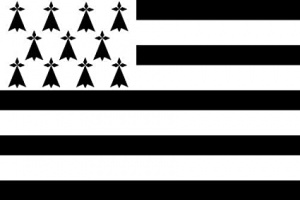Language/Breton/Grammar/How-to-Use-Be
Hi Breton learners! 😊
In this lesson, we will learn how to use the verb "be" in Breton. We will look at the different forms of the verb and how to use them in sentences.
Introduction
The verb "be" is one of the most important verbs in any language. In Breton, it is used to express existence, identity, location, and other states. It is also used to form the passive voice.
Present Tense
The present tense of the verb "be" is formed by adding the suffix "-out" to the verb stem. The verb stem is the same for all persons and genders. Here are some examples:
| Breton | Pronunciation | English Translation |
|---|---|---|
| Emañ | [ɛˈmaːɲ] | He/She/It is |
| Emomp | [ɛˈmɔmp] | We are |
| Emoc'h | [ɛˈmɔx] | You are (singular) |
| Emaint | [ɛˈmɛ̃nt] | They are |
Negative Form
The negative form of the verb "be" is formed by adding the suffix "-n'eus" to the verb stem. Here are some examples:
| Breton | Pronunciation | English Translation |
|---|---|---|
| N'emañ ket | [nɛˈmaːɲ kɛt] | He/She/It is not |
| N'emomp ket | [nɛˈmɔmp kɛt] | We are not |
| N'emoc'h ket | [nɛˈmɔx kɛt] | You are not (singular) |
| N'emaint ket | [nɛˈmɛ̃nt kɛt] | They are not |
Interrogative Form
The interrogative form of the verb "be" is formed by adding the suffix "-ezh" to the verb stem. Here are some examples:
| Breton | Pronunciation | English Translation |
|---|---|---|
| Emañ-e? | [ɛˈmaːɲ ɛ] | Is he/she/it? |
| Emomp-ni? | [ɛˈmɔmp ni] | Are we? |
| Emoc'h-c'hwi? | [ɛˈmɔx xwi] | Are you (singular)? |
| Emaint-int? | [ɛˈmɛ̃nt ɛ̃nt] | Are they? |
Usage
The verb "be" is used to express existence, identity, location, and other states. Here are some examples:
- Person 1: Pelec'h emañ ar c'hafe? ([ˈpɛlɛx ɛˈmaːɲ ɑr ˈxɑfɛ]) (Where is the cafe?)
- Person 2: Emañ e Pariz. ([ɛˈmaːɲ ɛ ˈpa.riz]) (It is in Paris.)
The verb "be" is also used to form the passive voice. Here is an example:
- Ar c'hafe a vez kavet e Pariz. ([ɑr ˈxɑfɛ ɑ vɛz ˈkavɛt ɛ ˈpa.riz]) (The cafe is found in Paris.)
Conclusion
In this lesson, we have learned how to use the verb "be" in Breton. We have looked at the different forms of the verb and how to use them in sentences. To improve your Breton Grammar, you can also use the Polyglot Club website. Find native speakers and ask them any questions!
➡ If you have any questions, please ask them in the comments section below.
➡ Feel free to edit this wiki page if you think it can be improved. 😎

